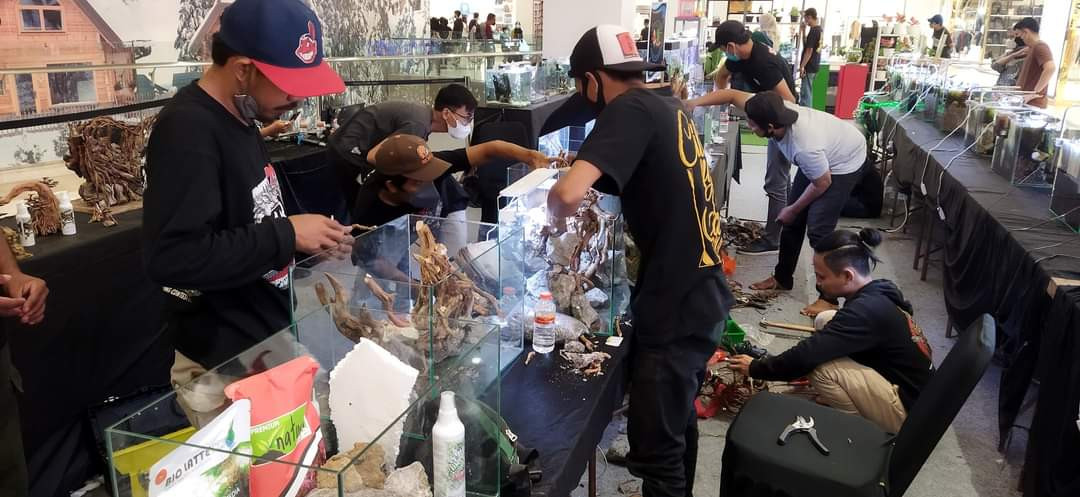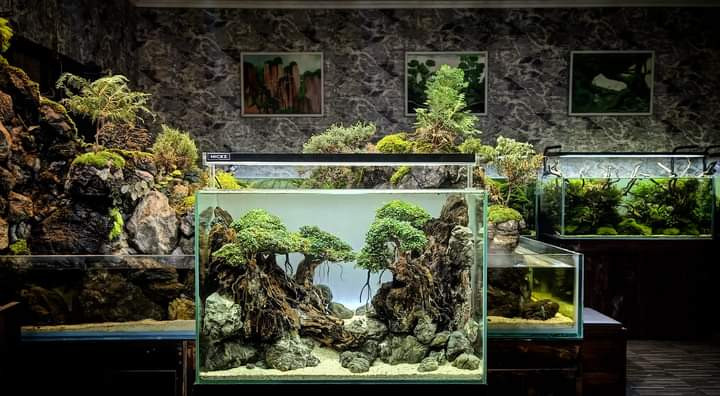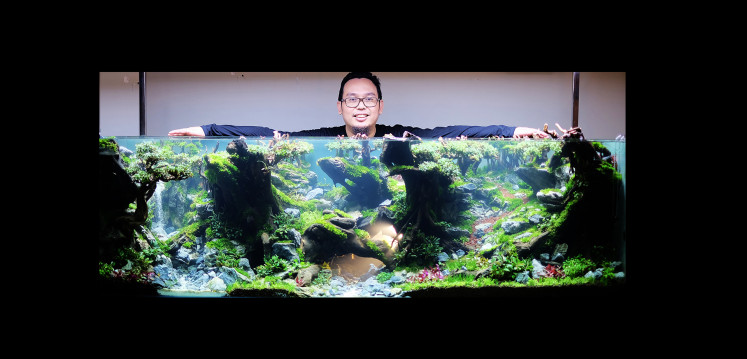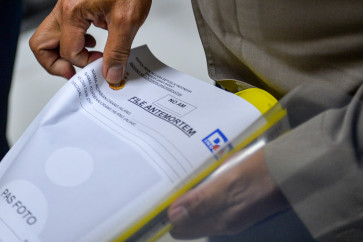Aquascaping wave: Creating underwater beauty in a home aquarium
Change text size
Gift Premium Articles
to Anyone

P
lants, fish and an aquarium. Some consider aquascapes to be merely fancy aquariums, but they couldn’t be more wrong. It is an art form, and owing to the growing number of enthusiasts over the years, the aquascape industry is growing in profitability as well.
It is easy to look at aquascaping as a hobby, but it is much more than that to its most dedicated and ardent practitioners, or aquascapers.
"Aquascaping is an art form in an aquarium that utilizes natural resources, blending art and science," said Riswandi, a long-time enthusiast who owns aquascaping business Aquair in Depok, West Java.
To put it simply, aquascaping can be defined as the craft of creating an esthetic, aquatic landscape in an aquarium.
There are two general styles, Dutch and Japanese. The former style is evocative of flower gardens, employing colors, leaves and textures to compose an artistic underwater ecosystem. The latter style seeks to evoke the impression of terrestrial landscapes and draws heavily from the esthetic concept of wabi-sabi, which centers on the constancy of transitoriness and imperfection as beauty, the beauty of ever-changing nature.
Indonesia has long adopted the Dutch style, possibly since its conception in the 1930s, being a former Dutch colony and all. The Japanese style, however, didn’t become known in the country until around the 2010s, and it exploded in popularity with the pandemic’s arrival.
According to Ridwandi, the aquascaping market has two consumer segments: hobbyists and enjoyers. Hobbyists spend their time learning about the dos and don'ts, which plants suit what style and which fish will survive in what environment. Meanwhile, enjoyers tended to buy ready-made aquascape kits and avoid the hassle of selecting and arranging plants, rocks, fish and other elements themselves.

He added that no single style was prevalent in Indonesia, that it was “more a matter of [personal] taste".
While the recently popular Japanese "nature style" aquascape and its subtype iwagumi (Japanese for rock formation) that features stones as the centerpiece layout might have many new fans, the Dutch style still continued to retain its loyal devotees.
"The trend is rather stable and I think it will continue to grow as time goes by," Riswandi noted.
Maintenance and care
Aquascaping is not as simple as putting some plants and rocks into an aquarium and filling it with water. Those who want to try their hand at aquascaping need to do their research to avoid killing the living aquatic organisms they place in their aquarium.
"There are many things to consider, for example, the size of the aquascape. Different sizes require different filters, lighting, pH level, carbon dioxide and temperature control," said Mochammad Abdul Malik, owner and founder of Aquascape Snail Indonesia in Cianjur, West Java.
He has had some customers complain about their plants dying, only to find out that they had not provided the adequate conditions in their aquariums.
For example, plants that prefer lower temperatures can die from the heat in hotter cities, so aquascapers can use fans to control the aquarium’s temperature.
"Aquascapers also need to consider the type of plants in the aquarium. Some require low light, while some high light. We need to adjust the light to match the plants' needs for sunlight. Not to mention the carbon dioxide level needs to be monitored, so it is sufficient for both the plants and the fish," he added.
The main focus of an aquascape is the aquatic layout and ecosystem. Fish, shrimp and other small creatures in an aquarium are not the focal point, which sets it apart from the hobby of fishkeeping. As some plants require more carbon dioxide and fish require oxygen, aquascapers need to find the right balance to sustain the ecosystem in their aquariums.

"It is important to remember to keep the aquarium clean," said Putut Bayu, the manager of Nickz Aquascape in South Tangerang, Banten.
He recommends monitoring the aquarium on daily and weekly bases for algae, as they multiply very quickly. Unchecked algae growth may turn the water green and disrupt the balance of the aquarium ecosystem.
"The water needs to be drained [and replaced] at least every three to four days and the filter needs to be changed every three months," Putut added, emphasizing that neglecting to do so could kill the plants.
He also warned that only 50 percent of the water in an aquarium should be drained and refilled to avoid “resetting” the ecosystem. In addition, applying liquid fertilizer would keep the plants in the aquascape healthy.
More than an aquarium
As a hobby, aquascaping is akin to gardening underwater. It has layers of depth and complexity behind its simple facade, so it is no wonder that it attracts people from all walks of life, from gardeners and nature enthusiasts to enjoyers of aquatic esthetics.
Samsul Sidik picked up the hobby for his love of nature and landscape views. He wanted a miniature landscape that he could look at anytime he liked, so he decided to create a Japanese-style aquascape.
"I started learning about it in 2019, but it wasn't until 2020 that I bought my aquarium and created my own miniature landscape," he said. Samsul also joined some Japanese forums to better understand which plants and fish to get for his first aquascape.
It wasn't always smooth sailing for him. He once filled his aquarium with carpet plants and small goldfish. Unfortunately, the fish dug out some of the soil, ruining the aquarium's landscaping and plants.
"I had to move the fish to another aquarium and trim the plants to let them regrow healthy," said Samsul.
Sahabudin has found his challenge elsewhere on taking up the hobby at the start of the pandemic. During his relatively short time dabbling in aquascaping, he has come to realize that controlling algae growth and maintaining balance in the pH, carbon dioxide and oxygen levels are the hardest part of the hobby.

"If you want to add fish, find the right fish [species] to pair. Some fish are more aggressive, which can cause stress for the other types of fish. Some may eat the shrimp and plants in the aquarium, too," he said.
Sahabudin advises other newcomers to the hobby like himself to consult with local aquascaping experts before they begin.
He also pointed out that an aquascape might not turn out as desired right off the bat and to expect some trial and error, just like in attempting to create the perfect garden.
People might fail to maintain their aquascape initially “and that's fine”, he stressed.
ohmg









